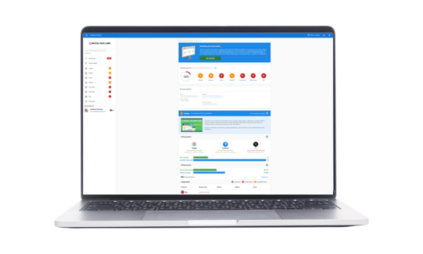PPC the right way: A no-BS guide to running profitable ads

PPC the right way isn’t about throwing money at Google Ads and hoping for the best. It’s about the digital strategy, precision, and avoiding the rookie mistakes that drain budgets. I’ve seen too many small businesses burn cash on ads that go nowhere because they skipped the fundamentals. Let’s fix that.
What does “PPC the right way” even mean?
PPC (pay-per-click) advertising lets you bid for ad placements in search results or social feeds. You pay only when someone clicks—but doing it right means every click brings you closer to a sale, not just vanity metrics.
The wrong way: Spraying generic ads everywhere.
The right way: Targeting high-intent buyers with hyper-relevant messaging.
Here’s how to nail it.
Step 1: Set up campaigns that actually convert
Start with goals that matter
Forget “brand awareness.” Focus on goals tied to revenue:
- Lead generation (e.g., contact forms, demo requests).
- Direct sales (e.g., ecommerce purchases).
- High-value clicks (e.g., appointment bookings).
Pro tip: Use Google’s “Maximize Conversions” bidding strategy once you have ~15 conversions/month. Until then, manual CPC lets you control costs.
Target keywords like a sniper
Not all keywords are created equal. Prioritize:
| High-Intent Keywords | Low-Intent Keywords |
|---|---|
| “Buy blue widgets near me” | “What are widgets?” |
| “Widgets pricing” | “Widgets for beginners” |
Do this:
- Use exact match for high-intent terms (e.g., [buy blue widgets]).
- Use phrase match for related searches (e.g., "affordable blue widgets").
- Negative keywords are your best friend. Block irrelevant terms like “free” or “DIY.”
Example: A local bakery targets “custom birthday cakes near me” instead of “cake recipes.”
Write ads that cut through the noise
Your ad copy needs to scream relevance.
Bad: “Best Bakery in Town—Try Us Today!”
Good: “Custom Birthday Cakes Delivered by 3 PM Tomorrow—Order Online Now.”
3 rules for winning ads:
- Lead with the offer (discount, free shipping, urgency).
- Include your keyword in the headline.
- Test CTAs like “Get Your Quote” vs. “Book a Free Consult.”
Step 2: Optimize for profit, not just clicks
Landing pages that don’t suck
Your ad’s job is to get the click. Your landing page’s job is to get the conversion.
Fix these mistakes ASAP:
- Slow load times (aim for \<2 seconds).
- Vague headlines (match the ad’s promise).
- Too many options (one CTA \= less confusion).
Example: If your ad says “50% Off First Month,” your landing page should repeat that offer above the fold.
Retarget like your revenue depends on it (Because it does)
97% of first-time visitors leave without buying. Retargeting brings them back.
How to do it right:
- Show ads to users who viewed specific products.
- Offer a time-sensitive discount (e.g., “10% Off If You Book Today”).
Kill underperforming ads fast
Check your metrics weekly. If an ad has:
- CTR \< 2%: Rewrite the copy.
- Conversion rate \< 2%: Overhaul the landing page.
- High CPC but low conversions: Pause the keyword.
Step 3: Avoid these 5 PPC money pits
Mistake #1: Ignoring mobile users
60% of searches happen on phones. Yet most landing pages look like this on mobile:
☑️ Tiny text
☑️ Broken buttons
☑️ No click-to-call option
Fix it: Use Google’s mobile-friendly test tool.
Mistake #2: Forgetting About Competitors
Spy on competitors with tools like SEMrush. Steal their best keywords and undercut their offers.
Example: If a rival charges $100/month for SEO, offer $75 with a “price match guarantee.”
Mistake #3: Using broad match (Unless you hate money)
Broad match lets Google show your ad for anything vaguely related to your keyword.
What happens:
- Your ad for “luxury watches” shows for “cheap watch repair.”
- $200 later, you’ve wasted cash on tire-kickers.
Stick to exact and phrase match.
Mistake #4: Skipping ad extensions
Extensions make your ad bigger and more clickable. Use:
- Sitelinks: Link to top-selling products.
- Callouts: Highlight free shipping or 24/7 support.
- Structured snippets: Showcase product categories.
Mistake #5: Setting and forgetting
PPC isn’t a crockpot. You can’t “set it and forget it.”
Weekly checklist:
- Review search terms report (block junk keywords).
- Test new ad variations.
- Adjust bids for top-performing keywords.
FAQs about doing PPC the right way
“How much should I spend on PPC?”
Start with $500–$1,000/month. Allocate 80% to high-intent keywords and 20% to testing new audiences.
“How long until I see results?”
Give it 60–90 days. Optimize aggressively in the first month.
“Should I hire an agency?”
If you’re spending >$5k/month or lack time, yes. Digital Hive Labs specializes in scaling profitable campaigns for small businesses.
Why most PPC campaigns fail (And how yours won’t)
The #1 reason campaigns flop? Misaligned targeting. You’re either:
- Targeting people who aren’t ready to buy.
- Sending clicks to a generic homepage.
The fix:
- Use the 3-click rule. Can users reach the offer in 3 clicks or less?
- Track conversions religiously. If a keyword hasn’t converted in 30 days, pause it.
PPC the right way isn’t a mystery. It’s about ruthless focus on what drives sales, not vanity metrics. Target smarter, optimize faster, and kill what’s not working. Follow these steps, and you’ll turn ad spend into profit—not a money pit.

Ready to take the next step? Get your FREE digital marketing audit here. We’ll help you identify the most cost-effective strategies for your unique business needs.